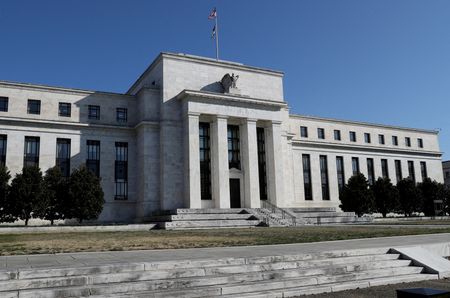
By Lindsay Dunsmuir and Ann Saphir
(Reuters) – As continued high inflation eats further into Americans’ pocketbooks, Federal Reserve Governor Lael Brainard on Thursday became the latest, and most senior, U.S. central banker to signal that the Fed is getting ready to start raising interest rates in March.
“The committee has projected several hikes over the course of the year,” Brainard told the Senate Banking Committee, which is considering U.S. President Joe Biden’s bid to promote her to the post of Fed vice chair.
“We will be in a position to do that, I think, as soon as our purchases are terminated, and we’ll simply have to see what the data requires over the course of the year,” she said.
The Fed in December announced plans to wind down its assets purchases by March, faster than it had projected just a month earlier.
With inflation rising 7% in December from a year earlier — the fastest pace in nearly 40 years — Fed policymakers are eager to do more, sooner.
“We are clearly in a situation where the stance of monetary policy is wrongfooted against the current situation,” Chicago Fed President Charles Evans said at an event hosted by the Milwaukee Business Journal. “We need to be adjusting monetary policy to something closer to neutral… this is going to be the year where we readjust monetary policy.”
Evans said that in December he had penciled in three rate increases this year but said more may need to be done if inflation does not moderate this year as he expects.
“My forecast is that we’d have a 25-basis-point increase in March barring any changes in the data,” Philadelphia Fed President Patrick Harker said at a virtual event hosted by the Philadelphia Business Journal earlier Thursday.
“I definitely see rate increases coming, as early as March even,” San Francisco Fed President Mary Daly said late Wednesday.
Atlanta Fed President Raphael Bostic, St. Louis Fed President James Bullard and Cleveland Fed President Loretta Mester also flagged a March rate hike in Wednesday remarks.
LOOKING TO MARCH
In December most Fed policymakers thought they would need to raise rates at least three times this year, but in recent weeks — with inflation remaining well above their 2% goal and the labor market closing in on their full-employment goal — they’ve honed in on a March start to that process.
With a March interest rate rise now firmly on the table, several — including Brainard on Thursday — have also signaled they want to start shrinking the Fed’s $8 trillion balance sheet this year. That would also remove policy accommodation and reduce downward pressure on long-term borrowing costs.
Investors currently see an 86% probability that the Fed will raise its benchmark overnight lending rate, still set at the near-zero level, at its March 15-16 policy meeting, according to CME Group’s FedWatch program. They are pricing in another three rate hikes this year.
Earlier this week, Fed Chair Jerome Powell also threw his weight behind a firm tightening of monetary policy this year, arguing the strong economy, despite the surge in cases due to the Omicron variant, no longer “needs or wants” as much stimulus, as he flagged coming rate hikes and a shrinking balance sheet.
Harker said Thursday he sees the Fed beginning to reduce the size of its balance sheet in late 2022 or early 2023 and that its ultimate composition was still being debated by his colleagues.
Brainard, for her part, said the Fed will try to bring inflation down “as quickly as we can but consistent with a sustained and strong recovery.”
(Reporting by Lindsay Dunsmuir, Jonnelle Marte and Ann Saphir; Editing by Andrea Ricci)

